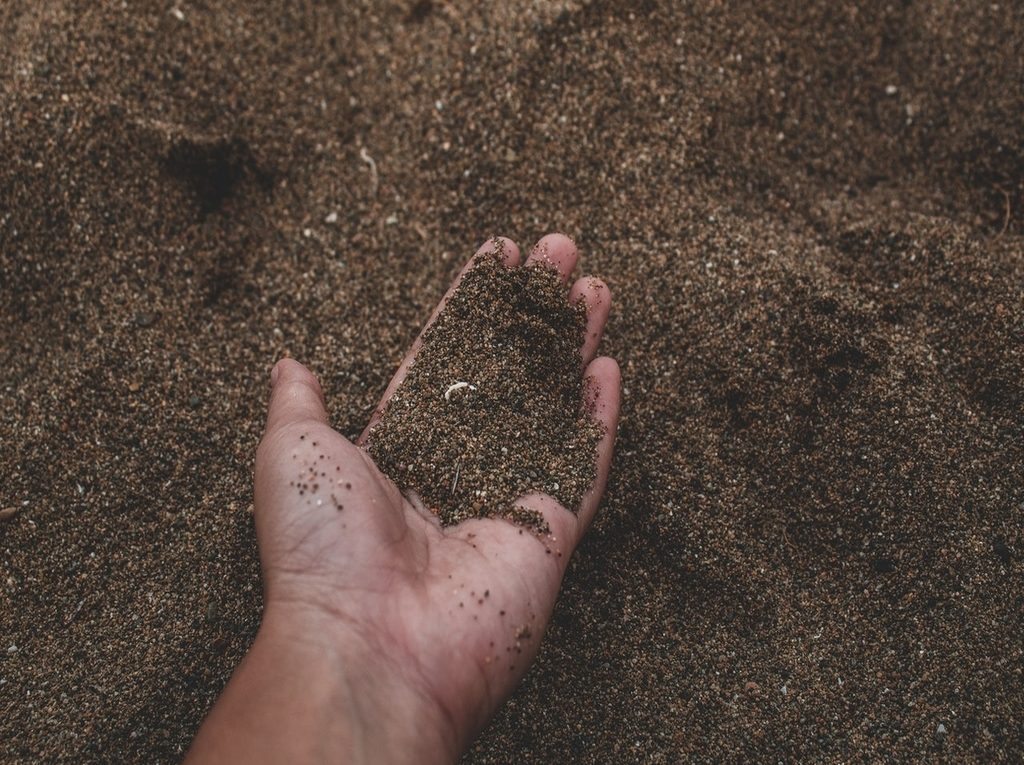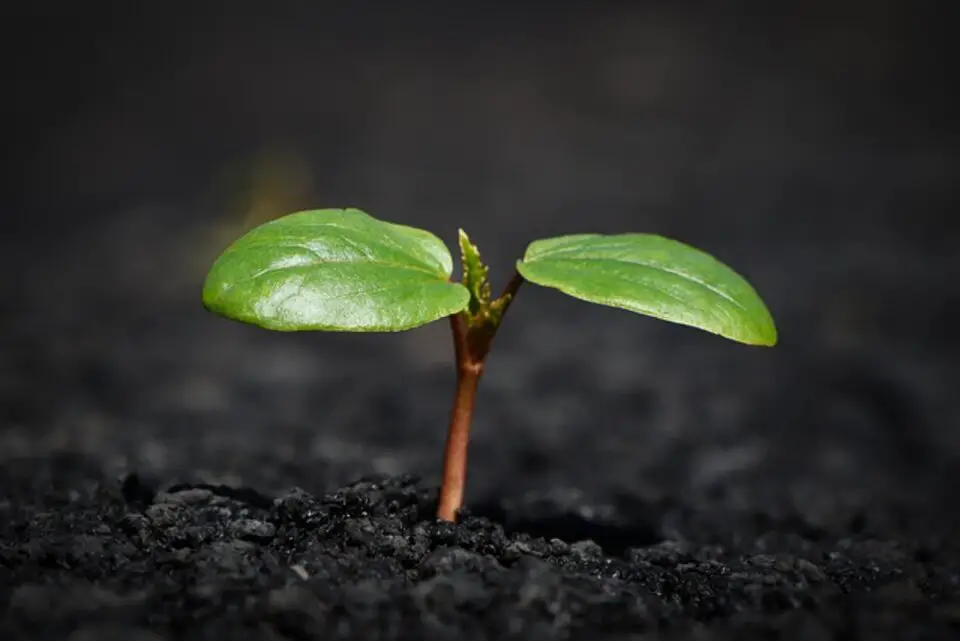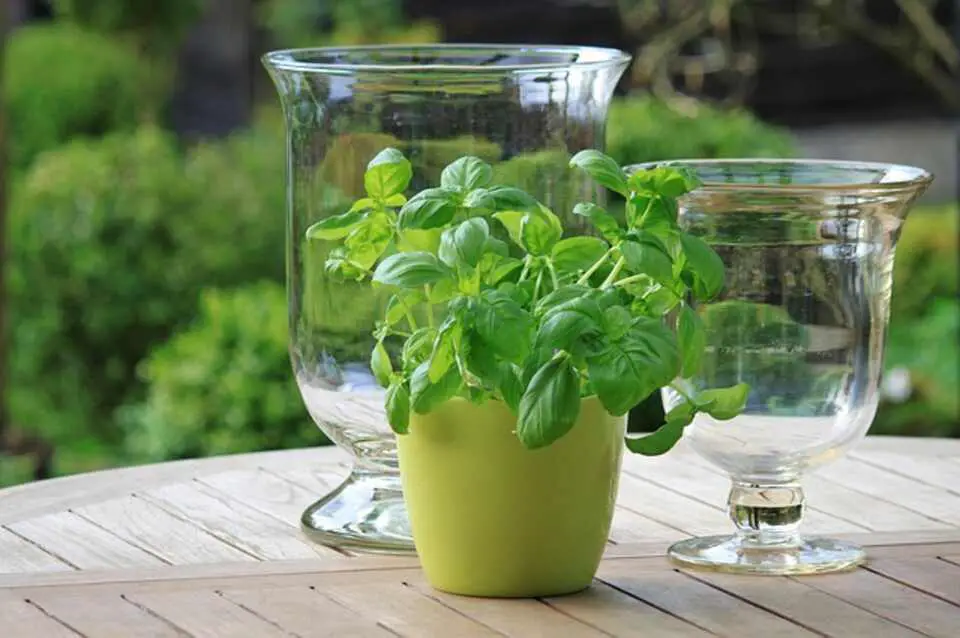Best Soil for Growing Herbs: For Indoors and Outdoors Gardening!
If your herbs look leggy, weak, or just refuse to grow, the problem might not be your watering or sunlight, it could be your soil. Even hardy herbs like basil and thyme won’t thrive in the wrong mix. So, what is the best soil for growing herbs?
Most herbs grow best in well-draining, loose soil with just the right balance of organic matter. But there’s more to it than grabbing a bag labeled “potting mix.” The right blend depends on whether you’re planting in pots, raised beds, or directly in the ground, and choosing the wrong one can stunt growth or invite root rot.
Let’s break down exactly what your herbs need to thrive.
Table of Contents
- 1 Why Soil Matters for Herbs
- 2 Understanding Soil Types: The Basics
- 3 The Ideal Soil pH for Herbs
- 4 Essential Soil Amendments for Herbs
- 5 Best Soil for Growing Herbs Outdoors
- 6 Best Soil for Growing Herbs Indoors
- 7 Special Considerations for Specific Herbs
- 8 Troubleshooting Common Soil Problems
- 9 Expert Tips for Maximizing Herb Growth
- 10 Conclusion: Build Your Herb Garden on the Best Foundation
- 11 Frequently Asked Questions
- 12 Author
Why Soil Matters for Herbs
Soil is much more than just dirt-it’s a living ecosystem that directly impacts your herbs’ health and productivity. When you choose the right soil, you’re setting the stage for herbs to develop strong roots, absorb nutrients efficiently, and resist common diseases. Well-structured soil allows for optimal water movement, preventing both drought stress and waterlogged roots.
It also supports beneficial microorganisms that help break down organic matter, making nutrients more accessible to your plants. By understanding and prioritizing soil quality, you’ll not only boost your harvests but also enhance the flavor and aroma of every herb you grow.
Understanding Soil Types: The Basics
Sandy Loam: The Gold Standard for Herbs
Sandy loam is widely regarded as the ideal soil for most herbs, thanks to its balanced composition of sand, silt, and clay. This blend provides excellent drainage, which is crucial for preventing root diseases, while still retaining enough moisture and nutrients for healthy plant growth. The loose structure of sandy loam encourages roots to expand easily, allowing herbs to access water and nutrients efficiently.
Additionally, this soil type warms up quickly in spring, giving your herbs an early start and extending the growing season. If your garden doesn’t naturally have sandy loam, you can improve your soil by incorporating organic matter and coarse sand.
Other Soil Types and Their Challenges
- Clay Soil: Characterized by its dense, heavy texture, clay soil holds water well but drains poorly. This can suffocate herb roots and lead to rot unless amended with organic material and sand to improve aeration.
- Chalky Soil: Often stony and alkaline, chalky soil can be challenging for herbs, as it tends to be low in essential nutrients. Adding compost and organic matter can help, but some herbs may still struggle unless grown in raised beds or containers.
- Sandy Soil: While sandy soil drains rapidly, it doesn’t retain nutrients or moisture well. To make it suitable for herbs, you’ll need to regularly add compost, leaf mold, or other organic amendments to boost fertility and water-holding capacity.
The Ideal Soil pH for Herbs
Most culinary herbs flourish in soil with a neutral to slightly acidic pH, ideally between 6.1 and 7.0. This pH range ensures that essential nutrients like nitrogen, phosphorus, and potassium are readily available, supporting vigorous growth and rich flavors. If the soil is too acidic or alkaline, certain nutrients become locked up, leading to stunted plants and pale leaves.
Testing your soil’s pH before planting is a smart move, as it allows you to make adjustments with lime (to raise pH) or sulfur (to lower pH) as needed. Remember, some specialty herbs may have unique pH preferences, so always check the requirements for your chosen varieties.
Essential Soil Amendments for Herbs
Organic Matter: The Secret Ingredient
Incorporating organic matter such as compost, well-rotted manure, or leaf mold is one of the best ways to improve any soil type for herbs. Organic matter not only adds vital nutrients but also enhances soil structure, helping sandy soils retain moisture and making heavy clay soils more friable and easier for roots to penetrate. It fosters a healthy population of beneficial microbes that break down nutrients and suppress plant diseases. Regularly adding organic amendments ensures your soil stays fertile, airy, and full of life, providing a solid foundation for your herbs to thrive season after season.
Aeration and Drainage Boosters
- Perlite and Vermiculite: These lightweight, natural minerals are excellent for improving soil aeration and drainage, especially in container gardens or heavy soils. They prevent compaction, allowing roots to breathe and water to flow freely.
- Grit or Coarse Sand: For herbs that demand especially sharp drainage, such as rosemary and thyme, mixing in horticultural grit or coarse sand can make a significant difference. This amendment helps prevent water from pooling around roots, reducing the risk of rot and fungal diseases.
Fertilizer Tips
- When it comes to feeding herbs, less is often more. Over-fertilizing, especially with high-nitrogen products, can lead to lush but bland foliage. Opt for slow-release, organic fertilizers like compost or worm castings, which provide a steady supply of nutrients without overwhelming your plants. Apply fertilizers sparingly, and always follow label instructions to avoid burning tender roots.
Best Soil for Growing Herbs Outdoors
Outdoor herb gardens offer the advantage of natural sunlight and space, but they also expose your plants to variable weather and soil conditions. To give your herbs the best possible start, begin by selecting a sunny location that receives at least six hours of direct sunlight daily. Remove weeds and debris, then test your soil’s pH and nutrient levels. If your native soil is heavy clay or too sandy, amend it with generous amounts of compost and well-rotted manure to improve texture and fertility.
For poorly draining sites, consider building raised beds or mounded rows to keep roots above soggy ground. Mulch your beds with straw or shredded leaves to retain moisture, suppress weeds, and gradually enrich the soil as the mulch breaks down. By investing time in soil preparation, you’ll create a thriving environment where herbs can reach their full potential.
Best Soil for Growing Herbs Indoors
Indoor herb gardening allows you to enjoy fresh flavors year-round, but it comes with its own set of soil challenges. Unlike outdoor beds, containers have limited space and can quickly become waterlogged or depleted of nutrients. Choose a high-quality, peat-free potting mix designed specifically for herbs or vegetables, as these blends are formulated for optimal drainage and nutrient balance.
To further enhance drainage, mix in perlite or vermiculite, which help prevent compaction and allow roots to access oxygen easily. Always use pots with drainage holes to avoid water buildup, and consider placing a layer of gravel or clay pebbles at the bottom for extra protection. Refresh your potting mix annually and feed your herbs with a diluted organic fertilizer every few weeks to maintain healthy, productive plants indoors.
Special Considerations for Specific Herbs
| Herb | Preferred Soil Type | Notes |
|---|---|---|
| Basil | Rich, moist, well-drained | Prefers consistently moist soil, but not soggy; mulch helps retain moisture. |
| Rosemary/Thyme | Sandy, gritty, well-drained | Thrive in drier, fast-draining soils; avoid overwatering and heavy soils. |
| Mint | Moist, fertile, well-drained | Can adapt to various soils; spreads rapidly, so consider containers to control growth. |
| Parsley | Loamy, nutrient-rich | Needs steady moisture and regular feeding for lush leaves. |
| Lavender | Alkaline, sandy, well-drained | Dislikes acidic or heavy soils; add lime if necessary and ensure excellent drainage. |
Each herb has its own unique preferences, so tailoring your soil preparation to their needs will yield the best results. For example, Mediterranean herbs generally prefer lean, gritty soils, while leafy herbs like basil and parsley benefit from richer, more moisture-retentive mixes.
Troubleshooting Common Soil Problems
Poor Drainage
If you notice water pooling around your herbs or leaves turning yellow, poor drainage may be the culprit. To fix this, mix in coarse sand, perlite, or additional compost to lighten the soil. For persistent issues, switch to raised beds or containers, which offer greater control over soil structure and moisture levels.
Low Fertility
Herbs struggling with pale leaves or stunted growth may be suffering from nutrient-poor soil. Regularly top-dress your beds with compost, worm castings, or a balanced organic fertilizer to replenish essential nutrients. Rotating your herb crops and resting the soil with cover crops during the off-season can also help restore fertility.
Soil-Borne Pests or Diseases
Indoor herbs are especially vulnerable to pests and diseases that lurk in contaminated soil. Always use sterilized, high-quality potting mixes for containers, and clean pots thoroughly before replanting. Outdoors, practice crop rotation and promptly remove any diseased plants to prevent problems from spreading. Healthy, well-amended soil supports resilient plants that are better able to withstand pests and diseases.
Expert Tips for Maximizing Herb Growth
Regular Soil Testing
Testing your soil annually for pH and nutrient levels is a simple but powerful way to ensure your herbs have what they need to thrive. Adjust your amendments based on test results, and keep records to track improvements over time.
Mulching
Applying a thin layer of organic mulch around your herbs helps regulate soil temperature, conserve moisture, and suppress weeds. As the mulch decomposes, it also adds valuable organic matter to the soil, gradually improving fertility and structure.
Water Wisely
Herbs generally prefer soil that is kept slightly moist but not waterlogged. Water deeply but infrequently, allowing the top inch of soil to dry out between waterings. Always water at the base of the plant to minimize the risk of fungal diseases on leaves and stems.
Conclusion: Build Your Herb Garden on the Best Foundation
The journey to a thriving herb garden, whether indoors or outdoors, begins with the soil. By understanding your soil type, adjusting the pH, and enriching it with organic matter and the right amendments, you create an environment where herbs can flourish. Remember to tailor your approach for each herb’s unique needs, and don’t hesitate to experiment and observe what works best in your space. With careful preparation and ongoing care, you’ll enjoy a continuous supply of fresh, fragrant herbs that elevate your cooking and beautify your home or garden.
“Soil is the engine of any garden or container and it will control how your herbs will grow. Understanding, feeding and maintaining your soil is very important to the health of your herbs.”
Frequently Asked Questions
Can I use regular garden soil for potted herbs?
It’s not recommended, as garden soil is often too dense for containers and may contain pests or diseases that harm your herbs. Instead, use a sterile, well-draining potting mix specifically designed for container gardening to give your herbs the best possible start.
How often should I fertilize my herbs?
Herbs don’t require heavy feeding. A monthly application of a balanced organic fertilizer or compost tea is usually sufficient. Over-fertilizing can lead to excessive leaf growth at the expense of flavor, so always err on the side of caution.
What’s the best soil for starting herb seeds?
For seed starting, use a fine-textured, sterile seed-starting mix that provides excellent drainage and minimal added fertilizer. This helps young seedlings develop strong roots without the risk of damping-off disease or nutrient burn.
By following these soil guidelines and tips, you’ll lay the groundwork for a healthy, abundant herb garden-indoors or outdoors-that rewards you with fresh flavors and vibrant growth all year long.











